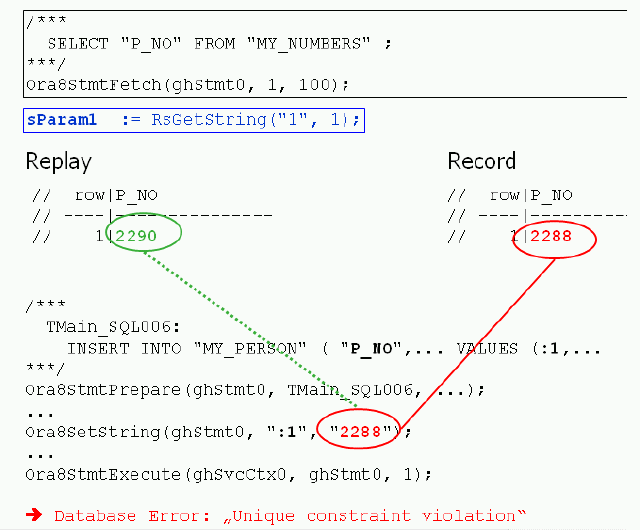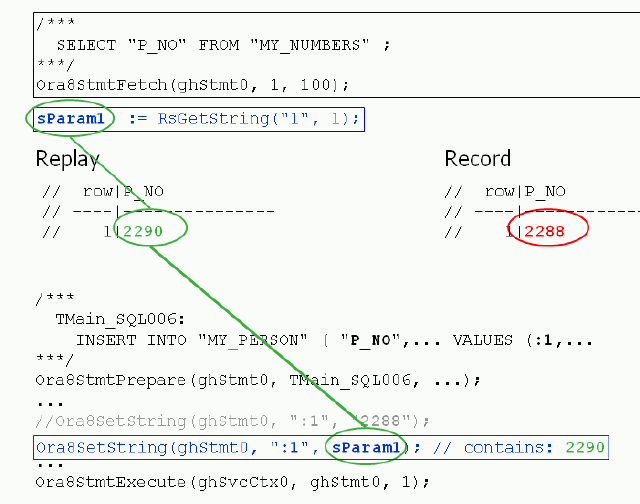Output-Input Correlations
TrueLog Explorer output-input correlation allows you to step through record and replay API calls side-by-side. It also identifies correlations between database input and output parameters. Similar to session-handling customization for Web applications, output-input correlation compares replay test runs to record sessions to identify differences that may indicate session-relevant values. The differing values are then used as the basis for searches of correlations between output and input values within test-run scripts. Ultimately, TrueLog Explorer enables you to modify identified dynamic values in your test scripts.
The output-input correlation feature is accessible from the workflow bar when database TrueLogs are open in TrueLog Explorer.
Database-error types are specific to the database type under test. Unique constraint errors typically result when identical data is submitted to a database multiple times. Such errors commonly present themselves when unique values that are used as primary keys in database tables, such as user IDs and order numbers, are submitted. When such personal information is submitted more than once, errors are raised. This type of duplication is the sort of session information that can be identified in test scripts and customized using TrueLog Explorer.
An output-input correlation is illustrated in the following two BDL code examples. The input parameter of the execution call is 2288. Because this value occurred in an output parameter table of a previous call, a correlation has been identified.

The value of the output parameter (2290) is parsed into a variable (sParam1) so that it can be used to set the value of the input parameter in future test runs.
